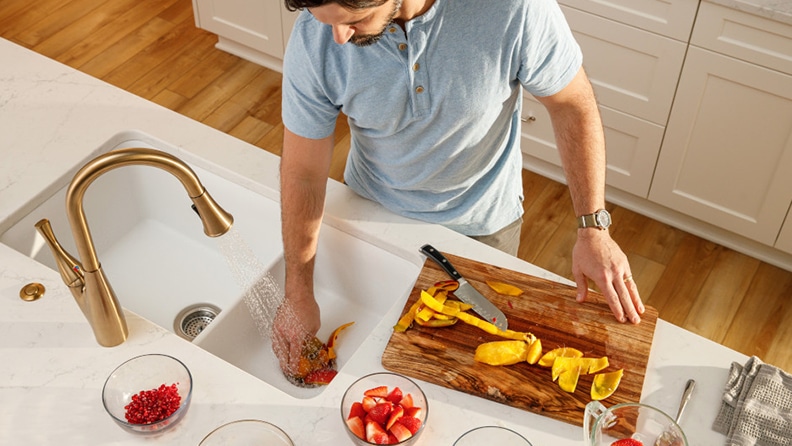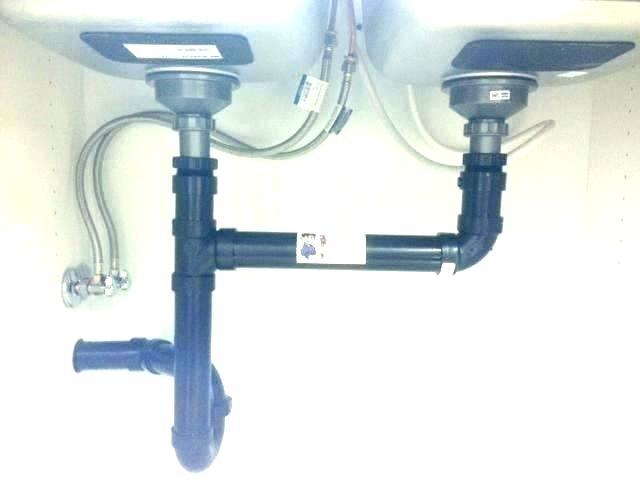Our Guide to Resolving a Leak in Your Garbage Disposal
Our Guide to Resolving a Leak in Your Garbage Disposal
Blog Article
The article author is making several good points on the subject of Why Is overall in the article directly below.

Garbage disposals are essential kitchen area home appliances that help in throwing away food waste efficiently. Nonetheless, a leaking waste disposal unit can be a discouraging and messy issue to deal with. The good news is, numerous leakages can be fixed easily with a couple of simple steps. In this write-up, we will review just how to repair a leaking garbage disposal successfully.
Introduction
Garbage disposals are mounted under kitchen sinks and are developed to shred food waste right into smaller items, permitting it to go through the plumbing system conveniently. While these devices are normally reliable, leaks can happen with time due to deterioration, loosened links, or damage to the unit.
Step-by-Step Guide to Taking Care Of a Dripping Garbage Disposal
Shut off the Power
Prior to trying any repair work, ensure that the power to the garbage disposal unit is shut off to avoid the threat of electrical shock.
Locate the Leak
Determine the specific area of the leak and figure out the cause
Tighten Links
Use a wrench to tighten any type of loosened links in between the disposal unit and the plumbing system.
Replace Seals or Gaskets
If the leak is due to worn seals or gaskets, eliminate the old elements and change them with brand-new ones.
Patching Splits or Openings
For splits or openings in the disposal unit, use epoxy or an appropriate patching product to secure the broken location.
Identifying the Source of the Leak
Before trying to fix a dripping garbage disposal, it is essential to identify the source of the leakage. This can usually be done with visual assessment or by carrying out basic examinations.
Visual Evaluation
Inspect the garbage disposal device carefully for any kind of indicators of water leak. Pay very close attention to areas around seals, gaskets, and connection points.
Checking for Leaks
One means to check for leakages is by running water with the disposal unit and checking for any kind of noticeable indications of leakage.
Typical Causes of Leaks in Garbage Disposals
Worn Seals and Gaskets
Seals and gaskets play a crucial duty in stopping water from leaking out of the garbage disposal. With time, these elements can weaken, leading to leaks around the disposal system.
Loose Connections
The connections in between the waste disposal unit and the plumbing system can become loosened in time, causing water to leakage out throughout operation.
Cracks or Openings in the Disposal Unit
Physical damages to the waste disposal unit, such as cracks or openings in the housing, can also lead to leaks.
Tools and Products Needed for Repairing a Dripping Garbage Disposal
Prior to starting the repair service process, gather the essential tools and materials, including a screwdriver, flexible wrench, plumbing's putty, substitute seals or gaskets, and epoxy or patching material for fixing cracks or openings.
Checking the Garbage Disposal After Repair
As soon as the repair service is full, examine the garbage disposal by running water via it to guarantee that the leak has actually been solved.
Preventive Maintenance Tips to Prevent Future Leakages
To stop future leaks, it is vital to perform normal maintenance on your waste disposal unit. This includes keeping it tidy, avoiding placing non-food things or hard items down the disposal, and regularly checking for leakages or various other issues.
Conclusion
Finally, repairing a dripping waste disposal unit is a relatively simple procedure that can be finished with fundamental devices and materials. By complying with the actions outlined in this article and practicing precautionary upkeep, you can maintain your garbage disposal in good working condition and avoid expensive repair services in the future.
HERE’S HOW TO FIX YOUR GARBAGE DISPOSAL
WHAT TO DO IF SOMETHING IS STUCK IN YOUR GARBAGE DISPOSAL
If the impeller won’t turn, there’s probably something stuck in the disposal. It could be a steak bone or peach pit, although plumbers report pulling all sorts of inappropriate objects out of disposals, such as bottle caps or aluminum foil. Make sure power to the disposal is off, and look inside to see if you can see the source of the jam.
Never stick your fingers in a disposal. Pull out anything you see with tongs or pliers.
If the disposal still won’t work, it may be time to call a plumber or consider buying a new disposal. GEM Plumbing & Heating is here for all of your garbage disposal needs.
WHAT TO DO IF YOUR GARBAGE DISPOSAL DRAIN IS CLOGGED
Take everything out from underneath your sink and put a bucket or other container under your disposal to catch any water that drains out. Disconnect your disposal from the power supply. If it’s plugged into a wall outlet, unplug it. If it’s hardwired into an electrical box, go to the electrical panel and turn off the breaker for the disposal. Pour ¼ cup of baking soda into the drain, followed by ½ cup of white vinegar. Give the solution a few minutes to fizz and do its work. Look into the disposal with a flashlight to see if you can see an object that might be causing the clog. If you see it, remove it using tongs or pliers. MORE TIPS ON DEALING WITH A CLOGGED GARBAGE DISPOSAL
Never use drain cleaner in a garbage disposal. It can damage the plastic parts inside the disposal. You can also be splashed with the caustic liquid while working to clear the clog. Beware! Never stick your fingers into a garbage disposal. Trust us — not a good idea. In many instances, your dishwasher drains through your garbage disposal. This allows the disposal to grind any large food particles that may be drained out of your dishwasher. There are some jurisdictions, however, where the plumbing code prohibits such a connection. WHAT TO DO WHEN YOUR DISHWASHER DRAINS THROUGH THE DISPOSAL
Run some water in the sink so your plunger has at least a ½-inch of water to create a seal and plunge vigorously up and down several times. You may need to repeat this several times. Run hot water down the drain to clear any residue that remains.

I ran across that blog posting on Why Is while doing a lookup on the web. Those who enjoyed our page kindly don't forget to share it. Thank you so much for your time invested reading it.
Need Help? Hire Us Now! Report this page